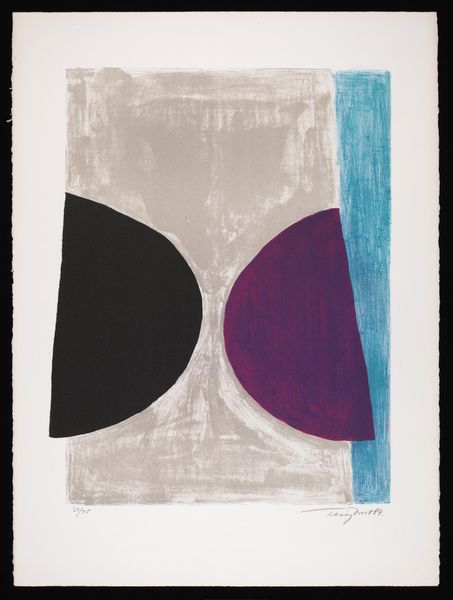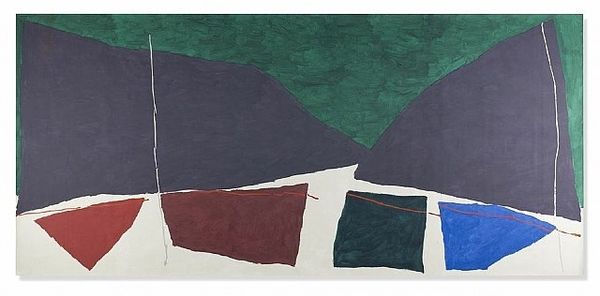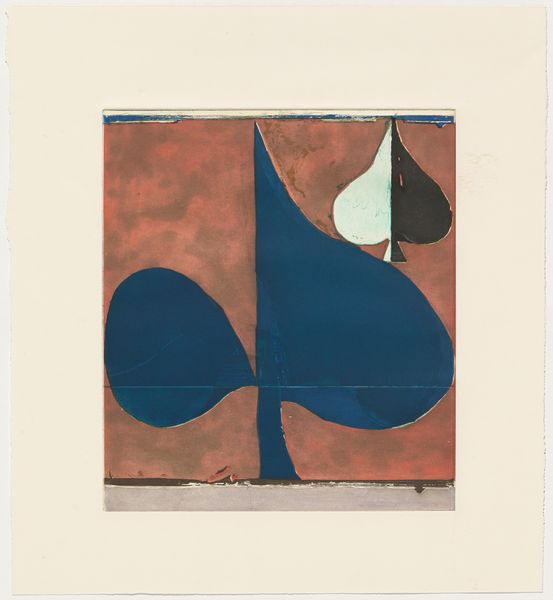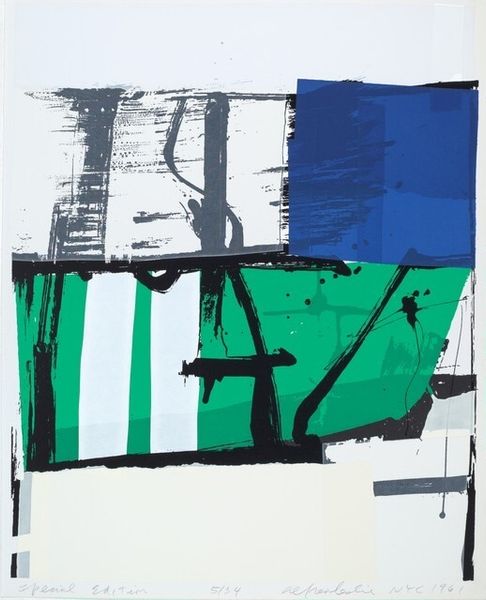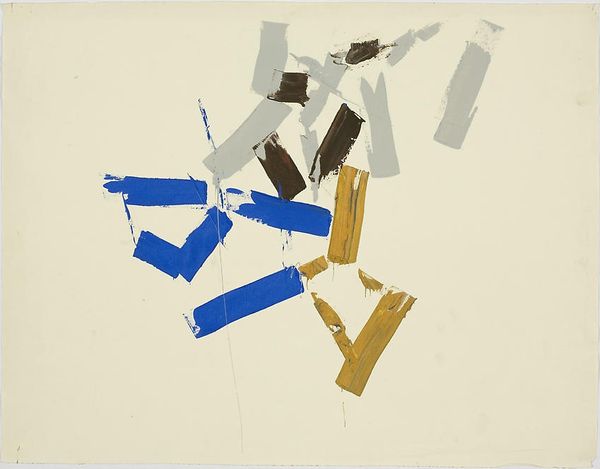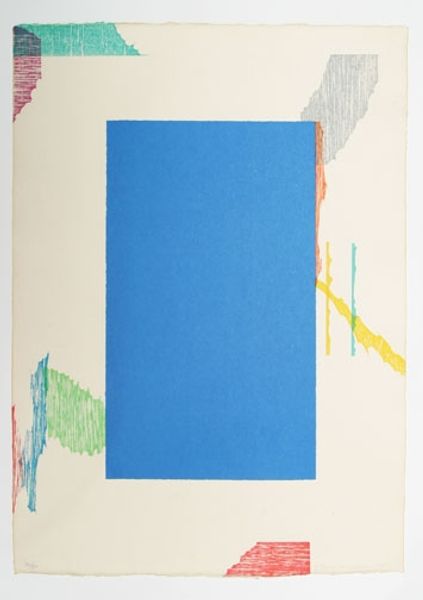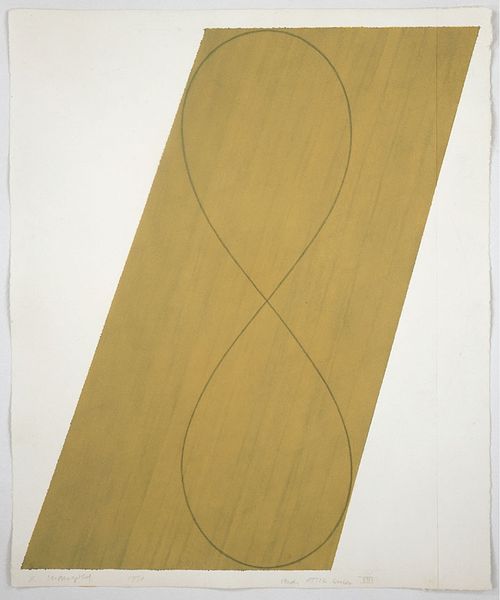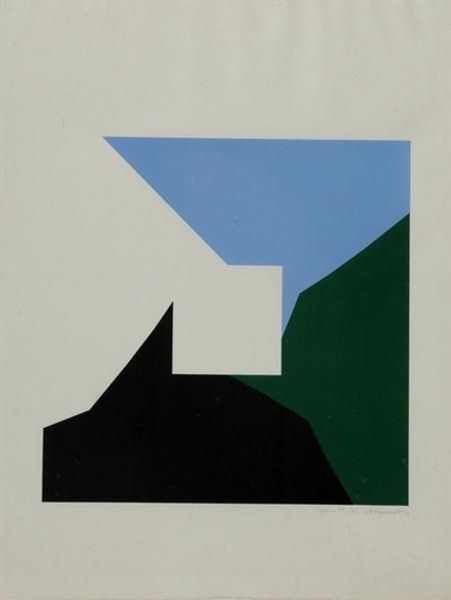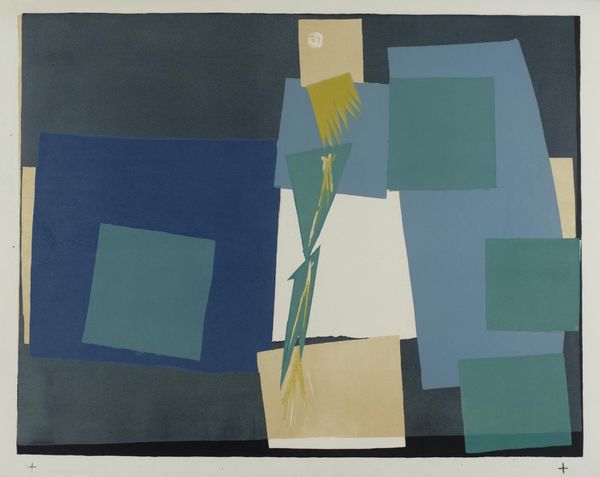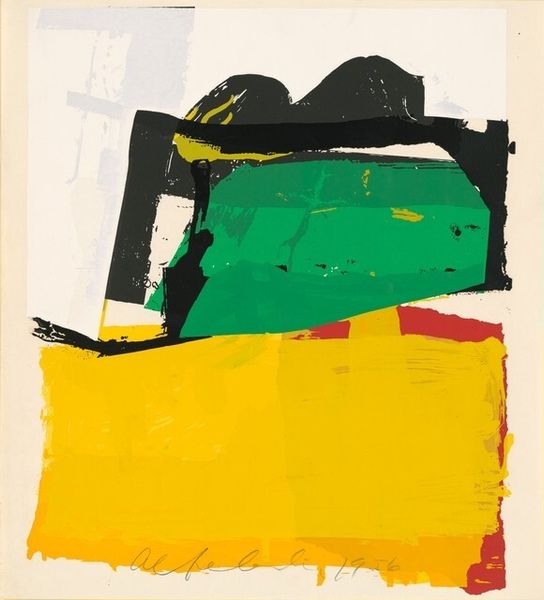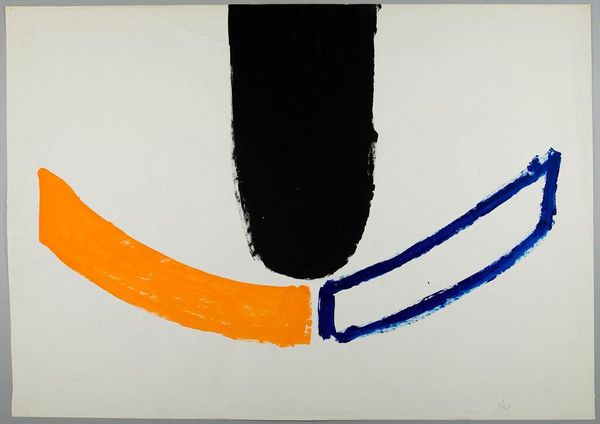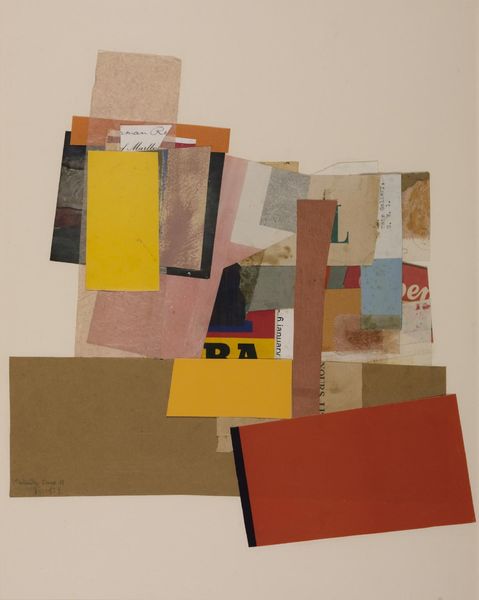
print, stencil
#
stencil art
#
abstract-expressionism
# print
#
pop art
#
stencil
#
form
#
geometric
#
abstraction
#
pop-art
#
line
#
modernism
Copyright: Howard Hodgkin,Fair Use
Curator: Looking at this piece, I’m immediately drawn to the feeling of controlled chaos. It's like a party on paper. Editor: And it’s a print called "Enter Laughing," made in 1964 by Howard Hodgkin. The composition has the air of a stage set doesn't it? You know Hodgkin was associated with British Pop Art and Abstract Expressionism. Seeing it as a stage really underscores those links, doesn't it? Curator: Absolutely! The strong, almost graphic shapes - a blue triangle, those squiggly green forms and the textured blobs—they're like actors waiting for their cues. There’s something wonderfully playful about its formal, almost severe construction too. It really clashes in a good way. Editor: Yes! It almost feels performative. Do you think this kind of semiotic disruption was intentionally courting the viewer into action during its early exhibition years, particularly as gallery representation was rapidly expanding across major cities at the time? Curator: I do. This piece really signals the burgeoning Pop Art movement, reflecting the spirit of accessibility, instant communication, and even, perhaps, the subversion of traditional fine art values. You can just see this image sparking a lot of chatter when it was first exhibited in the '60s. Editor: Right. Hodgkin certainly wanted to move the conversation beyond, or at least augment it, to embrace emotion. Looking at that black, scumbled mass – like dark clouds or… something organic pushing into the controlled, almost architectural space, I also sense something volatile just beneath the surface. Curator: Absolutely. A sense of controlled exuberance that speaks to its period while inviting closer inspection from us, its contemporary audiences. Editor: True! I didn’t expect to love the emotional landscape of this Pop Art statement, yet here we are!
Comments
No comments
Be the first to comment and join the conversation on the ultimate creative platform.
